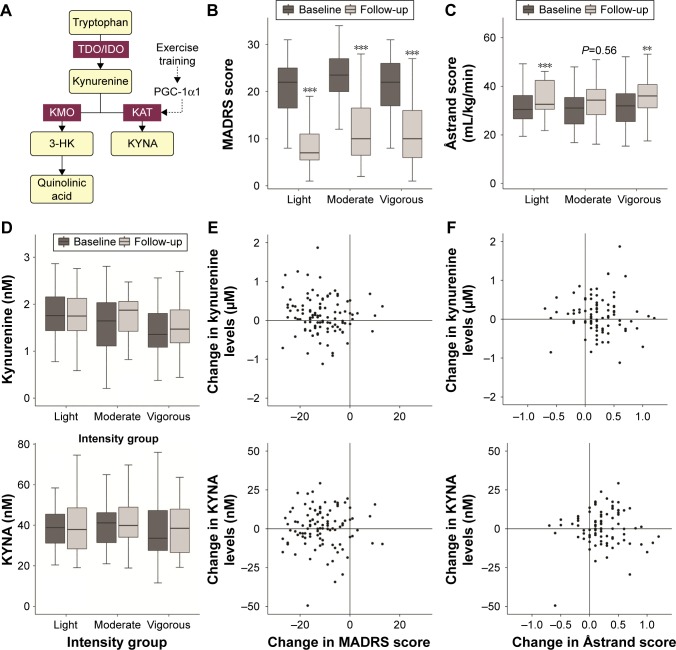Figure 1.
Overview of results.
Notes: (A) The kynurenine pathway. Tryptophan is converted into kynurenine by TDO and IDO, which in turn is converted into either 3-HK and quinolinic acid by KMO or KYNA by KATs. Exercise has been shown to increase PGC-1α1 in skeletal muscles, which in turn leads to an increase in KATs. (B) MADRS score at baseline and follow-up in each of the intensity groups. (C) Åstrand score at baseline and follow-up in each of the intensity groups. (D) Kynurenine and KYNA levels at baseline and follow-up in each of the intensity groups. (A–D) Horizontal bars indicate the median, the first, and the third quantiles. The whiskers extend from the hinges to the highest or lowest value that is within 1.5 times the interquartile range. **P<0.01; ***P<0.001. (E) Change in kynurenine and KYNA levels (level[follow-up] – level[baseline]) against the change in MADRS score (level[follow-up] – level[baseline]). (F) Change in kynurenine and KYNA levels (level[follow-up] – level[baseline]) against the change in Åstrand score (level[follow-up] – level[baseline]).
Abbreviations: 3-HK, 3-hydroxykynurenine; IDO, indoleamine 2,3-dioxygenase; KATs, kynurenine aminotransferases; KMO, kynurenine monooxygenase; KYNA, kynurenic acid; MADRS, Montgomery Åsberg Depression Rating Scale; TDO, tryptophan 2,3-dioxygenase.

